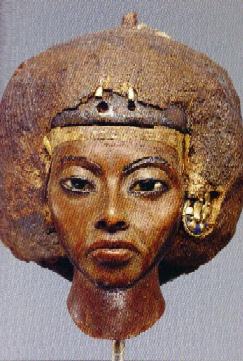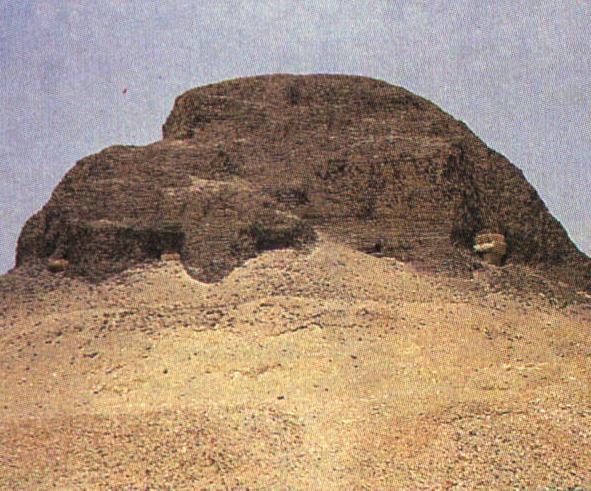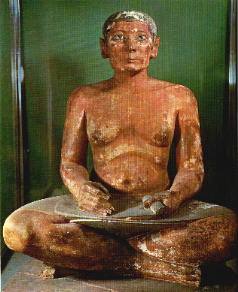
At the Faiyum's Entrance

As we follow the Bahr Yusef into the Faiyum, a town arises on each bank of the canal. To the left is Kom Medinet Ghurab, which contains the ruins of a temple built by Thutmose III, and a palace for Amenhotep III. You may have seen the gilded wooden bust of Queen Tiye from the latter; many call it the most realistic sculpture my people ever produced.

However, there's more to see at Il-Lahun, on the canal's right bank. Because the kings of the XIIth dynasty considered the Faiyum to be their greatest accomplishment, some of them are buried here. Straight ahead is the pyramid of Senusret II.

What! You say it looks like a rocky hill, rather than a true pyramid? That's because the Middle Kingdom pharaohs used mud brick, rather than limestone or granite. I suppose they felt they had to cut corners, since stone pyramids bankrupted the Old Kingdom, but like the houses from that day, the weather eventually wore the brick pyramids down. Another unusual feature is that the entrance is on the south side, rather than the north, where we traditionally put it; that gives would-be grave robbers considerable trouble.
In the vicinity of Senusret's pyramid are mastabas and graves from all periods. The valley temple of the god-king is about 1 km. away, on the edge of the nearest farms. The village next to it is for priests who serve the pharaoh's spirit, and other officials who work in the vicinity. Part of Il-Lahun is on a hill, nicknamed "the Acropolis"; here is where we believe that the vizier, and possibly the Pharaoh himself, stayed when they visited this district.
Il-Lahun is famous among students of my culture because hundreds of papyrus scrolls, written in hieratic (cursive Egyptian) script, have been found here. These contain stories, texts on mathematics and medicine, and various legal and temple documents, accounts and letters. It is because of them that the Middle Kingdom is often regarded as the golden age of Egyptian literature.
This concludes the tour. Now let us return to your boat, and may the odd gods of the outside world be with you!

Click on me to continue.




